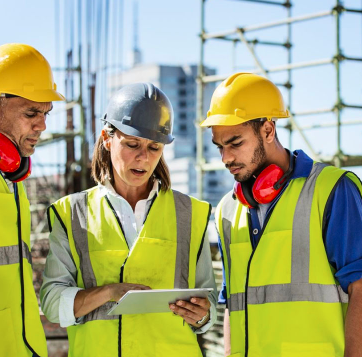Demolition of buildings and structures can be done for various reasons. One of them is when the structures reach their design lifespan. Every structure is designed to last for a specific period, which is normally known as the functional lifespan of the building. The design that is made to let it stay put for the expected lifespan is called the design lifespan of the structure. Normally, structures are made to last for 80-100 years.
Once the building reaches its design lifespan, the structure is no longer safe for use. It also poses an existential threat to its neighboring buildings. Moreover, old buildings are demolished to build new structures on the same land. Similarly, if the building is developing serious structural damage, small structures are demolished to build new structures.
The following article explains the process of building demolition in detail.
What Is Demolition?
The word demolition is referred to as destroying anything. It is a synonym for destruction, breaking down, and removal. Hence, building demolition means the process of dismantling or demolishing a structure using pre-planned methods and techniques after the end of the serviceability of the building.
What Is Implosion?
Apart from destroying the structures using pre-planned breaking techniques, structures are demolished using explosives as well. This type of demolition is called an implosion.
Building Demolition Process
Studying the structural parameters and their surroundings is referred to as surveying. The steps involved are:
- Surveying
- Removal of hazardous materials
- Preparation of plan
- Safety measures
Surveying
Building Surveying
A survey for the buildings meant to demolish includes the following;
- Types of construction materials used to make the building.
- Usage of building both prior and present use.
- Adjoining pedestrian and vehicular traffic.
- Drainage system and possible problems of water, flooding, pollution, and related things.
- The sensitivity of the neighborhood in terms of dust, vibration, noise, and traffic impact.
- The presence of wastewater, hazardous waste material, presence of toxic chemicals, radioactive materials, flammable or explosive materials, etc.
Structural Surveying
In the structural survey, the following things are included;
- The method used for the construction of the structure.
- The structural system of the building basement, vaults, and underground tanks.
- The original structural system was employed in the design.
- The condition of the overall structure.
Removal Of Hazardous Materials
If hazardous materials such as petroleum contaminations, radioactive materials, and asbestos minerals are found in the investigation or survey conducted on the demolished site. Specialized and skilled knowledge workers are called to remove the hazardous materials from the site.
Preparation Of Demolition Plan
A detailed demolition plan is made for different processes involved in the demolition.
- The location of the building to be demolished.
- The distance of the building from the adjacent buildings and street structures.
- The structural support system of the building.
- Method of handling demolished building debris.
- Time required for the complete demolition of the structure.
- Safety Measure During Demolition Of Building Structures
All the workers, site engineers, and other individuals on the site are informed about the potential hazards. All the flammable goods are removed from the site. Materials like timber, wood, and fuels are stored in the proper storage facilities.
Additionally, due to the activities on the site, several problems are faced by the workers such as dust, heat stress, noise exposure, and more. Special measurements are taken to lessen the impact of all these problems.
Demolition Methods For The Buildings
Demolition methods can be divided into two broad categories.
- Explosive methods
- Non-explosive methods
Non-explosive Methods
The demolition is done without the use of explosives. They are done with the help of some equipment. Some common non-explosive methods include:
Sledge Hammer
It is a small hammer good enough to be held in a single hand. This is used to demolish a single column or a small wall.
Excavators And Bulldozers
These are relatively big machines that are used to demolish buildings and structures of small size. Excavators are usually used in the excavation of soil and transferring debris into the trucks.
Wrecking Balls
They are used to demolish taller buildings with 6-7 stories, these buildings can not be demolished with excavators and bulldozers. The wrecking ball crack is a crack attached to a steel ball hanging with the help of a steel rope.
The steel ball is pulled and released towards the building. The impact then breaks the structure and recurring action demolishes the targeted building.
Explosive Methods
The most common explosive method used is;
Falling Like Trees
In this type of implosion, buildings are made to fall sideways. This is the most common type of implosion in use today. This method is only confined to the projects that have space at the side. The debris of the fallen building is then cleared or transferred to the dumping site with the help of excavators. This method is a bit expensive but very time friendly.





